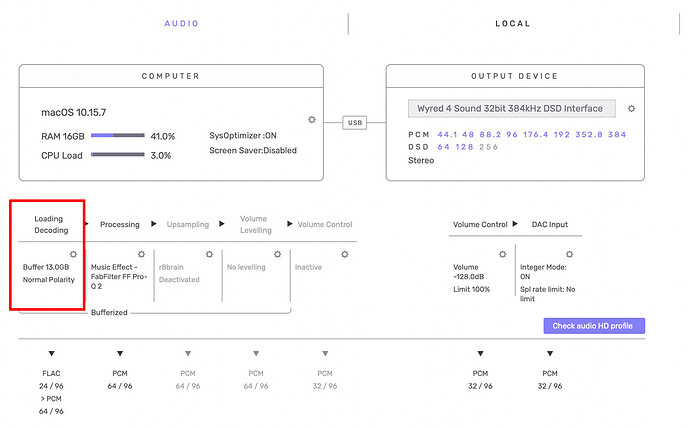

- #Audirvana plus vs pure music for mac#
- #Audirvana plus vs pure music software#
- #Audirvana plus vs pure music Pc#
- #Audirvana plus vs pure music mac#
Metadata fields in the new 3.5 Mac interface.Īudirvana also allows audio files to be sent to compatible network players that use the UPnP/DLNA protocol, the most universally used standard for transmitting music to wireless hi-fi systems without loss of sound quality.

Finally, it optimizes the operation of the digital-to-analog converter - integrated or external - by providing it with a suitable and pre-decoded digital stream.
#Audirvana plus vs pure music software#
The expert software reduces processor activity and stabilizes power supply, to minimize digital distortion and possible radio interference. This includes avoiding the intervention of other applications during listening, as well as any hidden modification of the audio samples.
#Audirvana plus vs pure music Pc#
In July 2018, Audirvana also launched the new version of its software for Windows 10, for PC owners.Īs Audirvana explains, the software "transforms the computer into a source of true high-fidelity audio," by becoming master of the computer's flow of audio signals.
#Audirvana plus vs pure music for mac#
The settings associated with each algorithm are slightly different, but both will allow you to define the multiple of the sampling rate to be applied (x2, x4 etc.) as well as to fine-tune various filters, essentially to neutralize the artifacts that result from these operations.Created by Damien Plisson and acclaimed by users all around the world, Audirvana has quickly established itself as one of the preferred sources in paid audio software for Mac owners by allowing music lovers who use macOs to replace Apple’s iTunes and take advantage of optimal sound quality, whether using HD online music services or managing locally stored files, including high resolution formats. This will facilitate the DAC’s work by giving it a stream that contains more precise points at the base. You can use Audirvāna to carry out this operation upstream: it will benefit from the computer’s much greater computing power, and with a high-performance algorithm. They therefore systematically oversample the signal just before the actual conversion, but work with limited computing power and more or less powerful algorithms, particularly for chip-cost and latency reasons. Indeed, almost all DACs today on the market operate on a very-high-frequency switching-principle with a resolution of only a few bits. This can improve sound quality, sometimes quite noticeably, depending on your system’s converter and the settings you choose. 'You can oversample your audio files directly in Audirvāna before playback on your system, using one of the two built-in high-performance algorithms: SOX (SoundExchange) and R8 Brain. Benefiting from the processing power of your computer, much higher than the internal capacity of the DAC, Audirvāna can run more sophisticated and demanding oversampling algorithms, and feed your DAC with a signal containing more accurate data that facilitates the interpolation work.'Ĭlick to expand.What definitely could affect the sound is the filtering done with oversampling Today, most DACs operate at very high internal frequencies and low resolution. With quality as sole priority, Audirvāna does not have to seek a compromise between processing speed and accuracy and can thus mobilize the computer’s computing power using the best algorithms. a PCM (or DSD) stream already decoded, which takes into account the characteristics of your DAC – for the order of reception of data beyond 16bits for example – and reduces the tasks to be performed at its level.

In addition, Audirvāna delivers a ‘ready-to-play’ digital audio stream that allows your converter to operate under optimal conditions, i.e. This limits processor activity during playback and protects the music from playback jitter and possible signal interference by stabilizing the computer power supply and limiting processor activity to the bare minimum: minus 0.5% CPU load less than 0:5% of CPU load. 'Audirvāna loads, decodes and processes the entire audio data of a track prior to playback in a buffer memory.


 0 kommentar(er)
0 kommentar(er)
